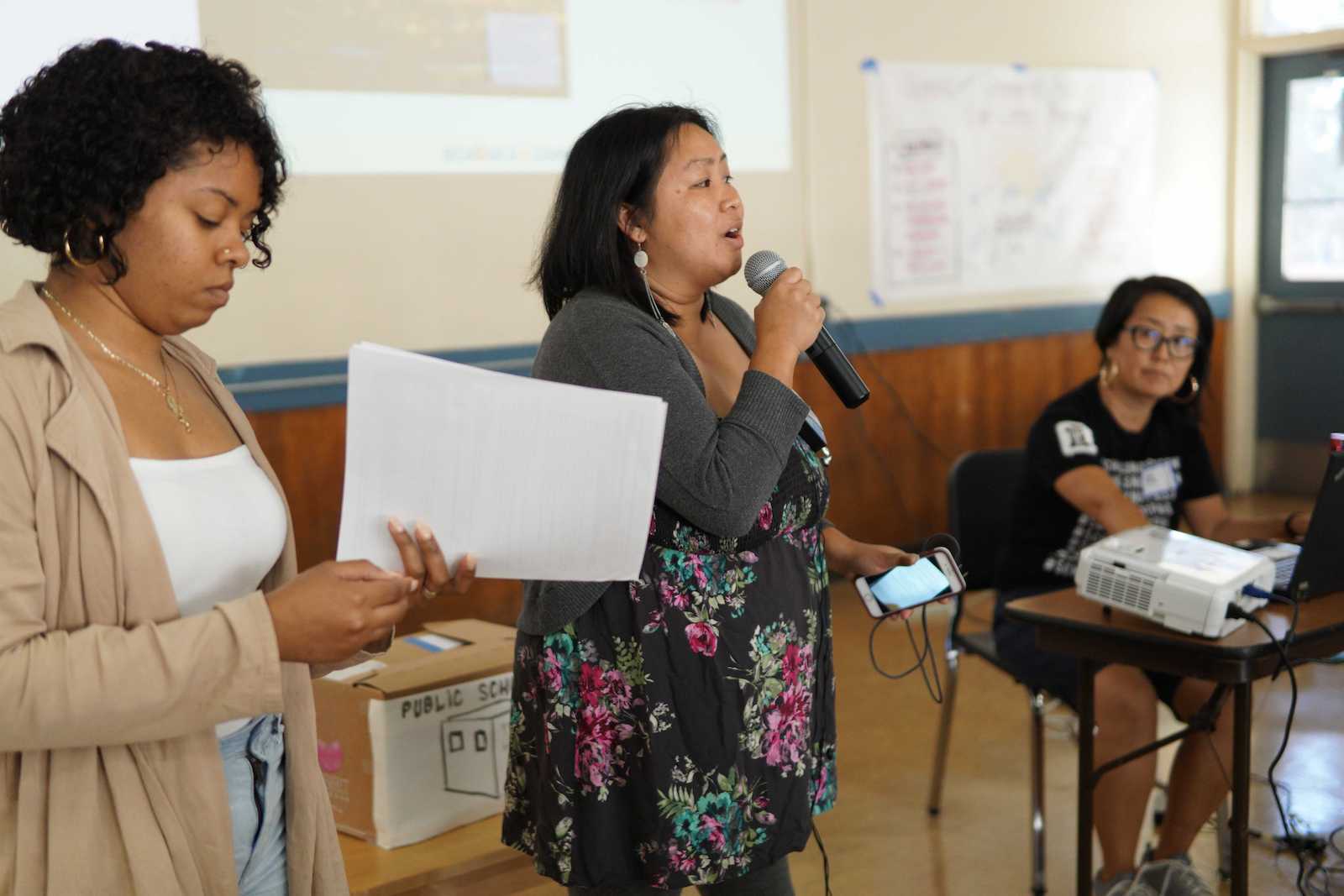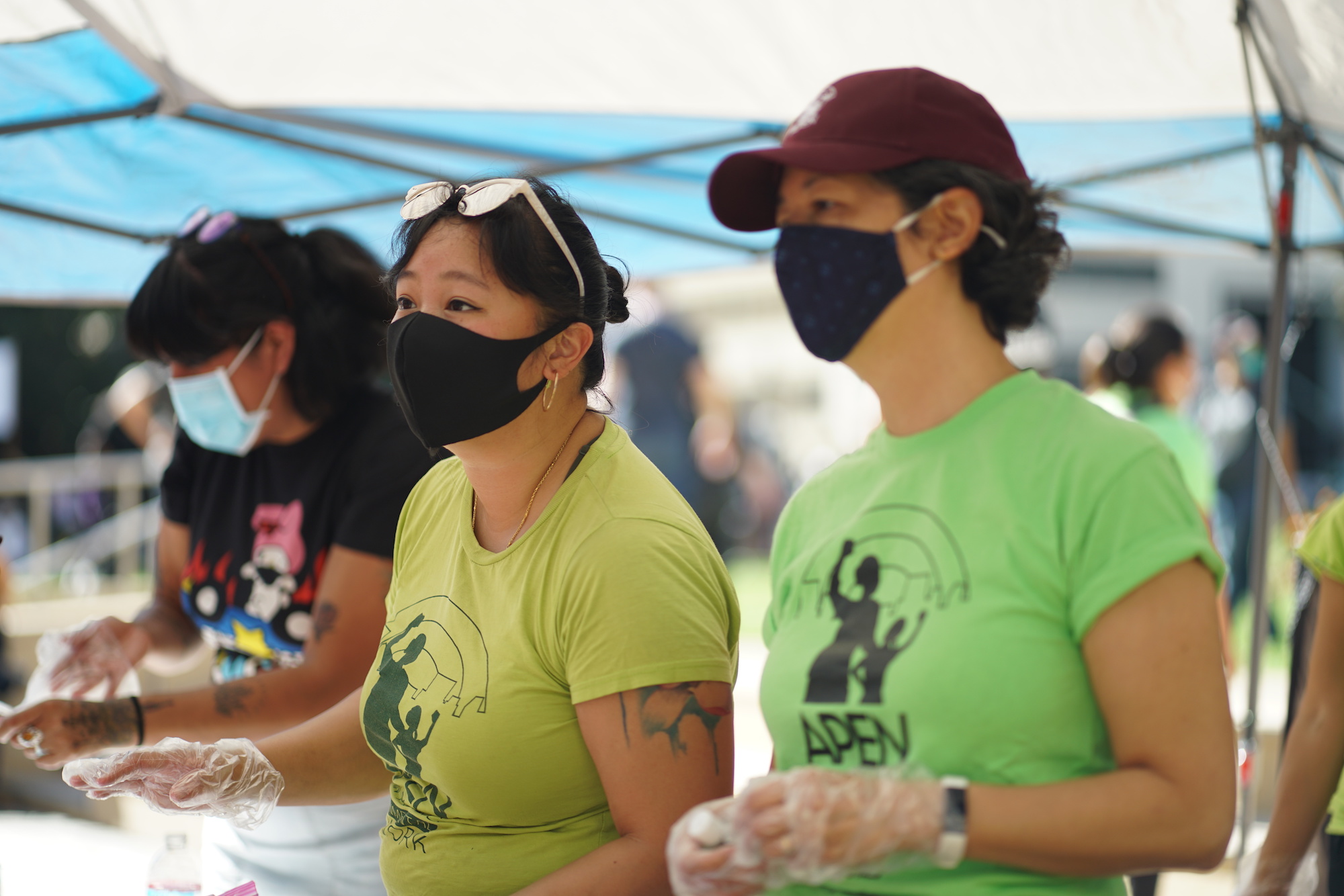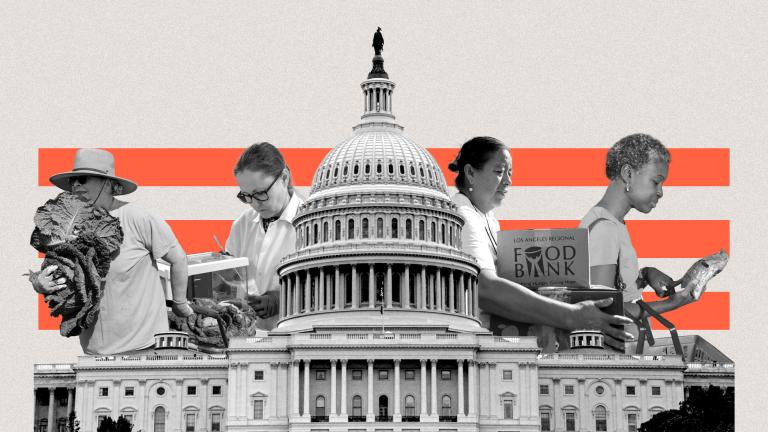Sandy Saeteurn grew up in Richmond, California, where Chevron’s massive 3,000-acre oil refinery reigns supreme. She’s no stranger to the refinery’s chemical flares, and she spent many of her childhood days home sick. She’s not the only one who has learned to link the refinery and the presence of illness in her community: A 2008 study (co-authored by Grist board member Rachel Morello-Frosch) found that almost half of all homes in the area had indoor levels of refinery-related particulate matter pollution that exceeded the state’s air quality standards.
Every day for nearly 120 years — longer than the city has existed — the refinery has processed thousands of barrels of oil. Its flares regularly paint the sky burnt orange before thick grey clouds of smoke cover the city. Chevron’s influence stretches beyond its pollution and the 3,500 refinery jobs it provides as the city’s largest employer — it also showers money on local elections and even runs a local newspaper, the Richmond Standard, which has been known to cast a positive light on the company.
Ever since Black residents first arrived in large numbers in the 1940s, people of color have been relegated into low-quality housing surrounding the city’s large industrial zones. Today the city, which is 82 percent non-white and home to large groups of migrants from Latin America and Southeast Asia, has worse air pollution than 94 percent of the country, according to data from the Environmental Protection Agency, which has cited the refinery for environmental violations roughly 150 times since 2016. The city’s childhood asthma rate is more than double the national average and, in the immediate aftermath of an explosion at the refinery in 2012, more than 15,000 people were forced to seek medical treatment for respiratory distress.
Chevron funds around one-third of Richmond’s annual budget through taxes and municipal services the company provides, which includes education and workforce development programs. When the company wanted to modernize its facility in 2008, it offered the city $11 million for the Richmond Police Department to “increase the number of police officers on the street,” according to a document outlining Chevron’s community benefits agreements with the city. The modernization project was eventually blocked after community groups sued the city for failing to do a proper environmental impact analysis, but a 2015 agreement between Richmond and Chevron ultimately set aside $2 million for Richmond police. Over the past decade, Richmond police have arrested hundreds for protesting the plant’s emissions.
As a child, Saeteurn and her family didn’t think to connect the Chevron plant and their disposition to illness. “Growing up there was a lot of explosion drills, and we never understood what they meant,” Saeteurn told Grist. “In elementary school, Chevron would come and have certain programs for kids, giving us money for books and school supplies. I left elementary school thinking ‘oh wow, Chevron’s a great company,’ when in reality they were slowly killing us.”
Saeteurn’s lighthearted view of Chevron didn’t last long. By age 14, she was a dedicated organizer and member of the Asian Pacific Environmental Network, or APEN, which is based in both Richmond and nearby Oakland. She’s used her struggles against environmental injustices to fuel her work, helping to organize influential campaigns such as the first-ever county-wide multilingual warning system, which now warns Richmond residents of looming chemical flares in Spanish, Chinese, Vietnamese, and Lao.

In response to questions from Grist, Chevron provided a statement saying that its Richmond workforce “takes its role as good neighbors seriously and continually works to reduce our environmental footprint and to improve reliability.” The statement listed modernization projects, such as a new hydrogen processing unit, which have contributed to reducing the site’s “air emissions by 86 percent over the last 40 years,” according to the company.
Because of the way issues like a growing housing crisis, immigration, and police violence intersect in the San Francisco Bay area — where more than 350 refineries and fossil fuel companies are based — Saeteurn and other organizers at APEN have been at the forefront of reframing the environmental justice movement to incorporate all aspects of residents’ encounters with their lived environments, whether that’s unwanted interactions with the police or gentrification and the displacement of poorer people from their home communities. This is a reimagining of the traditional focuses of environmental organizations that have long prioritized organizing around issues like toxic waste or access to public parks, while leaving issues like housing and criminal justice to different organizations.
“We think of environmental justice as being about how our communities get to be in relationship with our environment,” Alvina Wong, APEN’s campaign and organizing director, told Grist. “That means trees, air, and water — but also our neighborhoods, our homes, and how we get to be in relationship with each other.”
Saeteurn, a local political director with the group, said that this message resonates with the residents APEN serves.
“When the community talks about the environment, they’re not talking about clean air or water — what they’re really talking about is their struggles,” she explained. “So when we talk with the community about how the environment is impacting them, they’re not saying ‘oh yeah, Chevron’s in my backyard.’ They’re saying, ‘I can’t afford my rent. Oh yeah, the energy bill is going up and now I can’t afford food.’”
Besides continuing a long struggle with Chevron in Richmond, APEN has also been a crucial part of recent campaigns to move millions of dollars away from Richmond and Oakland police to do things like building new supportive housing for people experiencing homelessness and mental illness, as well as increasing residents’ access to healthy food through affordable markets. The organization has worked on recent campaigns for rent control and tenant rights in both cities, including mutual aid projects to crowdsource funds for rent and food for community members. It has fought to pass the Tenant Opportunity to Purchase Act, which would grant tenants two months notice and the first opportunity to purchase their home if their landlord plans to put their building on the market.
“Our work is trying to make the connection to a bigger kind of struggle related to racism,” said Saeteurn. “We’re here next to a refinery because of racism, which is the same reason why our members get stopped by the police or harassed on the streets. Environmental justice is about who we can call community, and what access we have to the environment around us.”
APEN came to fruition after a proposal at the First National People of Color Environmental Justice Leadership Summit in 1991, when summit participants noticed that Asian Americans and Pacific Islanders were largely underrepresented. The summit was attended by activists from everywhere from Puerto Rico to Vietnam and Laos, as well as other territories struggling with American chemical waste. During and following the American bombing of Vietnam and Laos in the 1960s and 1970s, thousands of Southeast Asian migrants fled to the Bay area and Richmond in particular. Connecting the dots between environmental injustices in America and the environmental fallout from American firebombing and the use of Agent Orange in their home countries, Bay area delegates decided to form an organization centered on the leadership of Asian immigrant and refugee communities.
“APEN is so successful because our organizing incorporates our cultural heritage and our own legacy fighting aggression and chemical warfare in our homelands,” Wong said. “For us, this memory of how our homelands were affected both physically and culturally by environmental violence and war allows us to really address the root causes of injustice.”
Since 1991, APEN has been an unstoppable organizing force, working to pass bills mitigating pollution, like SB32, which in 2016 laid the foundation for many greenhouse gas emission goals we see today. In 2018, they were part of a coalition that helped push Chevron to pay out a $5 million settlement for its 2012 explosion. Most recently, APEN helped spearhead the Reimagining Public Safety Task Force in Richmond, which just passed a reallocation of $10 million away from Richmond police to fund various community services. (In a short phone interview with Grist, Richmond Mayor Tom Butt acknowledged Chevron’s mighty role in city life and said that the city council is doing everything in its power to act as a counterweight to the fossil fuel giant.)
APEN is hardly alone in its expansive approach to environmental justice. It’s a member of the California Environmental Justice Alliance, which includes Bay area groups like Communities for a Better Environment, or CBE, and People Organizing to Demand Environmental and Economic Rights, or PODER. Two weeks ago, APEN, CBE, and PODER led Richmond’s participation in the 8th annual Global Anti-Chevron day of protest, drawing more than 100 people who participated in chants and painted murals in front of the refinery to protest the refinery’s emissions and hold it accountable for its alleged commitment to racial justice.
Denny Khamphanthong, an APEN community organizer who worked on the campaign to reallocate funds from Richmond’s police budget, says APEN’s approach to justice is not only about saving the environment around him, but also about building a safer future for his family’s next generations.
“What we’re all trying to do is build a better world so that our community can thrive,” Khamphanthong told Grist, “which requires our community to be funded and resourced in a way that feels most important to us, whether it be less police on our streets or less pollution in our air.”




